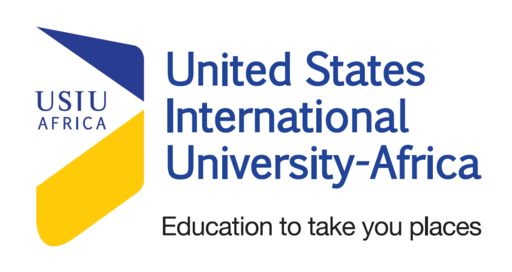Conference Agenda
Overview and details of the sessions of this conference.
Please select a date to show only sessions at that day. Please select a single session for detailed view (with abstracts and downloads if available).
Activate "Show Presentations" and enter your name in the search field in order to find your function (s), like presenter, discussant, chair.
Some information on the session logistics:
If not stated otherwise, the discussant is the following speaker, with the first speaker being the discussant of the last paper. The last speaker of each session is the session chair.
Presenters should speak for no more than 20 minutes, and discussants should limit their remarks to no more than 5 minutes. The remaining time should be reserved for audience questions and the presenter’s responses. We suggest following these guidelines also in the (less common) 3-paper sessions in a 2-hour slot, to allow participants to move between sessions. Discussants are encouraged to avoid summarizing the paper. By focusing on a few questions and comments, the discussants can help start a broader discussion with the audience.
Only registered participants can attend this conference. Further information available on the congress website https://www.usiu.ac.ke/iipf/ .
Venue address: United States International University Africa, USIU Road, Off Thika Road (Exit 7, Kenya), P.O. Box 14634, 00800 Nairobi, Kenya
Please note that all times are shown in the time zone of the conference. The current conference time is: 26th Nov 2025, 02:29:00am EAT
|
Session Overview |
| Session | ||||
A08: Subsidies
| ||||
| Presentations | ||||
How do Labels and Vouchers Shape Unconditional Cash Transfers? Experimental Evidence from Georgia. 1University of Barcelona, Spain; 2University of Navarra, Spain How can unconditional welfare transfers encourage households to allocate more resources to children? We conducted a nationwide randomized controlled trial in Georgia to test two approaches: providing food vouchers instead of cash and labeling cash transfers to promote child-related spending. Compared to cash alone, we find that labeling transfers significantly increases the share of household expenditure on children. By contrast, infra-marginal food vouchers reduce overall household consumption without altering its composition. This reduction likely stems from the higher shopping costs at voucher-accepting stores. Our findings suggest that subtle interventions like labeling can avoid the drawbacks of more restrictive, paternalistic policies.
Transfers or Subsidies? Comparing Mitigation Strategies for Energy Price Shocks in a Production Network Model 1Deutsche Bundesbank, Germany; 2Deutsche Bundesbank & Uni Freiburg, Germany The dependency on imported essential production inputs poses a threat of abrupt price hikes and shortages, potentially triggered by political events. The energy crisis resulting from the Russian war of aggression is an example. This paper investigates whether governments should bolster production via transfers or cost subsidies in the event of a crisis, utilizing a dynamic multi-sector economic model that is calibrated to Germany and incorporates endogenous firm entry and exit. Our findings suggest that subsidizing production costs is more beneficial for economic activity and welfare, provided the energy demand due to the subsidy does not significantly influence the price of the essential production input. If it does, this approach could become exceedingly expensive. In such scenarios, it is economically more efficient to provide lump-sum transfers to firms. The effectiveness of these policies ultimately hinges on their impact on the price of the imported input.
The Incidence of Affirmative Action: Evidence from Quotas in Private Schools in India 1ITAM, Mexico; 2Stockholm School of Economics, Sweden We examine the impact of a 25% quota in Indian private schools for disadvantaged students, one of the world’s largest education equity programs. Lottery-based estimates show that benefiting students attend more preferred and expensive schools, but program benefits are highly regressive: only 7.4% of spending reaches the poorest quintile, while 24.3% goes to the wealthiest. Low application rates among poorer students are not due to preferences or beliefs but stem from information gaps and application barriers. A randomized intervention confirms these frictions, showing that easing a single constraint, like information, does not necessarily reduce regressivity. Our findings highlight how such barriers can undermine redistributive policies, emphasizing the need for comprehensive interventions designed to address the joint incidence of multiple constraints to applying.
Childcare Subsidies, Working Mothers, and Children's Health in a Kenyan Informal Urban Settlement 1McGill University, Canada; 2African Population Health Research Center We consider the effect of childcare attendance and maternal employment on the health outcomes of young children in a low-income setting. We exploit exogenous variation introduced by a randomized childcare subsidy program in an urban informal settlement in Kenya which provided mothers of 1 to 3 year-olds with vouchers for 12 months of fully subsidized childcare. We find small, weakly significant, effects of increased childcare attendance on reporting symptoms of communicable illness. Findings suggest the income effect from the subsidy offsets this negative effect. We find little effect of maternal employment on child health. The intervention included a quality enhancement arm, where randomly selected childcare centres received early childhood development training, but we find little evidence of any effect on measured outcomes. We conclude that subsidizing childcare remains a viable policy option for encouraging maternal employment, but caution that increased exposure to communicable illness may be a factor.
| ||||
